To have a safe and fun ride, you need a vehicle that is good and stable enough. So before each trip, you should check the car in general (engine, brakes, fuel, protective equipment,…). And a very important part to check is the wheel. Sufficient wheels will help the car move smoothly, easily corner, brake, and protect the engine best.
In addition, good tires also ensure safety for riders on all roads. Today’s article will show you how to check your tires quickly and how to fix low tire pressure?
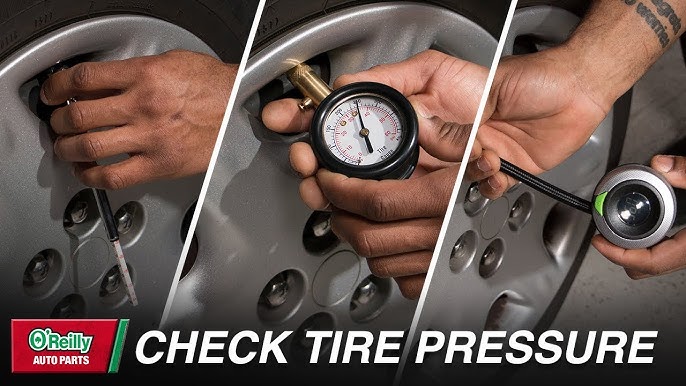
How To Check Tire Pressure?
Depending on the vehicle and tire type, there are appropriate tire pressure regulations. Make sure your wheels are properly inflated. Wheels that are too tight or too soft both affect the life of the tire. If not corrected in time, it will easily wear out the tires and lead to dangerous situations.
You can proactively check or receive alerts about the condition of your tires in one of two ways.
Check with Tire pressure monitoring system (TPMS) light
Today, most cars have a Tire pressure monitoring system (TPMS) that warns the driver about wheel tension. TPMS alerts by sending information from the sensor to the vehicle’s display.
If the TPMS light is on, it means that one of the four or all four wheels has a problem. You need to quickly bring the car to the nearest facility for wheel inspection and restoration.
Many people are subjective with the warning signal of TPMS. But if not corrected in time, the wheel will easily wear out or even explode while in traffic and cause an unexpected accident.
Test with Pressure Gauge
If the vehicle does not have an automatic warning system or is sure of the results, you can check it manually with a pressure gauge.
This product is a simple tool for measuring air and liquid pressure that you can easily measure tire pressure. If the PSI (Pounds per Square Inch _ pressure unit) is correct for that type of tire, your wheel is in good condition. On the contrary, if the metrics you measure are wrong, you should quickly correct them.
In addition, a Pressure Gauge is an essential tool that every car should have. And, you can easily find this device for 15$ – 50$, depending on the type.
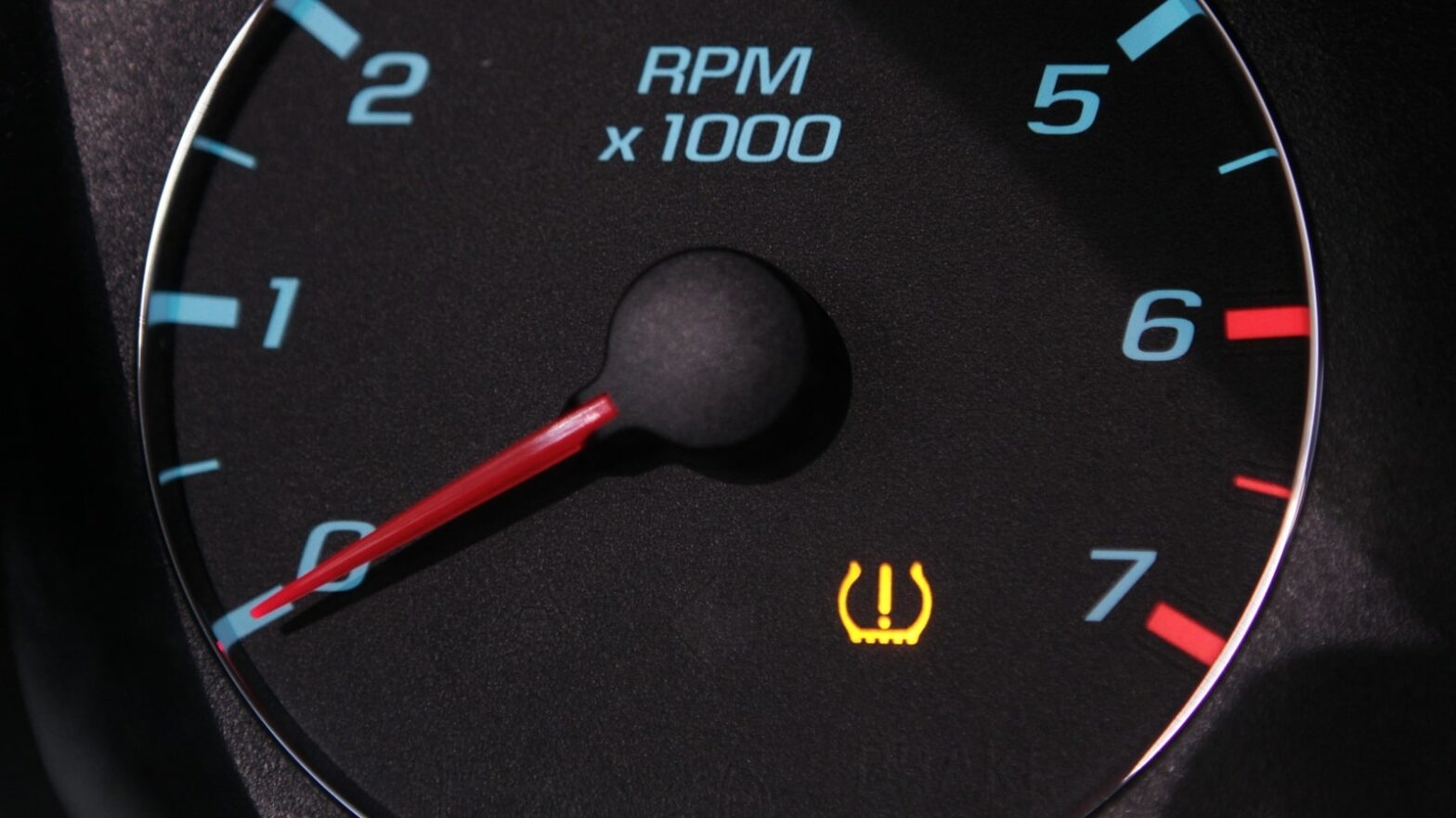
6 Easy Steps To Fix Low Tire Pressure
After checking and discovering that the tire tension is not appropriate, you need to adjust it before continuing to drive, especially long-distance driving.
If the wheel is too tight (PSI is higher than specified), press the middle part of the air pump-release valve to release some air.
On the contrary, in a low-pressure tire, we suggest you fix it in 10 minutes with the following 6 simple steps.
Check the proper PSI of the tire
To properly adjust the specified PSI level, you need to know what the PSI of the wheel is at. You can check by looking in your manual or on the web-based on your vehicle and wheel type. If you can’t find it, look at the wheel to find the words MAXIMUM PSI on it.
Find your nearest tire pump shop
For cars or trucks, there are no manual inflatable devices like bicycles and motorcycles. So you need to drive to the nearest auto repair facility to pump the gas. Then, try to maneuver the car into a position where the air hose can reach all four wheels.
Open pump valve – release air
Pump each wheel in turn. At this step, you should find the wheel’s air-inflator valve and unscrew the valve guard. This will take a little effort because the valve is on the inside of the wheel.
The pump-drain valve has a small needle in the center. Only when you press on that central part will the valve open to let gas in or out.
Air Pump
After opening the cap, pull the air pump hose to place it on the valve. Next, press the pump hose into the valve, and the air from the pump will automatically be fed to the wheel.
You will hear the very characteristic sound of air entering the wheel. Normally, after 1.5 seconds, the tire pressure will increase to 1 PSI.
Always keep an eye on wheel tension to avoid overcharging. Of course, many types of pumps allow you to pre-set the amount of PSI injected. Therefore, when this process is complete, the machine will automatically shut off, and you will hear a short alarm sound.
Adjust the tension
If you accidentally inflated too much, you should not worry too much. The solution is simply to press lightly on the central needle to be able to release some air. According to the experience of many experts, removing air for 3 seconds will reduce 1 PSI.
Complete the process
Always carry a pressure gauge with you to check the pressure in time. When the tire pressure has been adjusted to the correct level, just close the valve cover. Finally, repeat step 3 for the remaining wheels.
FAQ’s
What are the risks of driving with low tire pressure?
Constantly driving with under-tensioned wheels can lead to a lot of mishaps or unexpected events. It can range from mild to severe such as:
- Can’t win in time.
- Difficult to turn.
- Fuel loss.
- Wheel wear.
- The continuous shock when crossing uneven roads: This can damage internal components such as the TCM. Now, refer to the article on how to reset the transmission control module chevy.
- Wheels can also explode and loose steering.
Is it possible to inflate the wheels without checking the tire pressure?
The answer is yes. You may not need to use a pressure gauge to check tire pressure. Instead, rely on the vehicle’s TPMS system to warn you of wheel conditions.
Another way is to visit the repair shop to check and inflate periodically. Accordingly, the pumps have a preset amount of air injected into the wheel to reach the specified PSI.
How often should tires be checked?
You should check your tires at least once a month to detect and fix problems in time. The best time to check is when the vehicle is at rest because the wheels are not hot, so PSI measurement results are more stable.
You should also pay attention to checking the tires before every long trip to ensure safety for the whole long-distance!
Conclusion
The entire article above shows you how to check tire pressure and how to fix low tire pressure in 6 easy steps. Hope you successfully apply the following steps to have a safe trip and a great experience with your car.

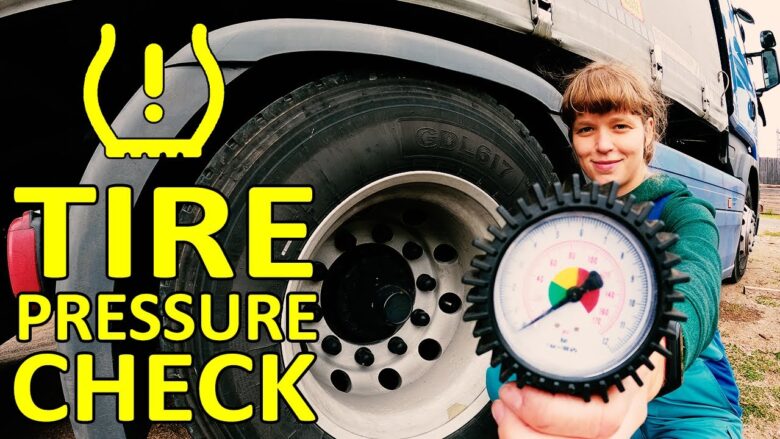
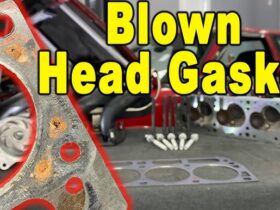
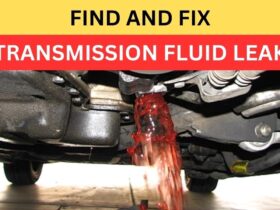
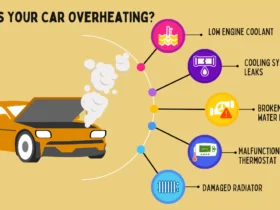
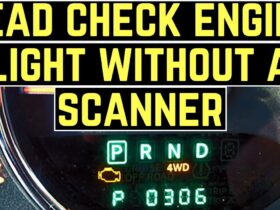
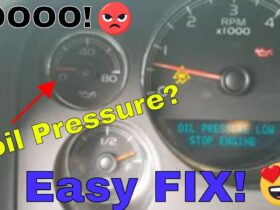
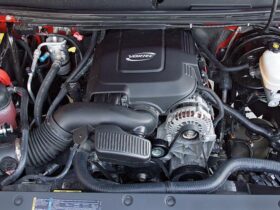
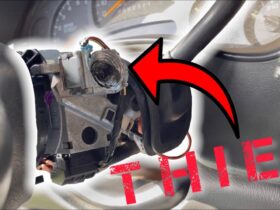


Leave a Reply